Your home’s roof is its first line of defense against the elements, safeguarding your living space and belongings from potential damage caused by harsh weather conditions. A well-maintained roof can last several years but won’t last forever.
Aware of the warning signs you need a new roof — such as sagging, aging, leaking, or granule loss — is essential for preventing costly damage, ensuring the structural integrity of your home, and maintaining a safe and comfortable living environment.
In this article, we will explore nine common warning signs that suggest it’s time to consider replacing your roof, so you can take action before small issues escalate into significant problems.
1. Sagging Roof
A sagging roof is a critical warning sign that you may need a new roof. This issue can indicate structural problems, compromised support, or underlying water damage, which can seriously threaten your home’s integrity. If you notice a sagging roof, contact a roofing contractor immediately to assess the situation and establish the best course of action.
A sagging roof can result from several factors, including:
- Inadequate support
- Water damage
- Excess weight
If you discover a sagging roof, it’s crucial to address the problem promptly to avoid further damage, such as the potential collapse of the roof or additional damage to your home’s interior. In some cases, a sagging roof may require a complete roof replacement to ensure your home’s safety and structural integrity.
2. Leaks or Moisture
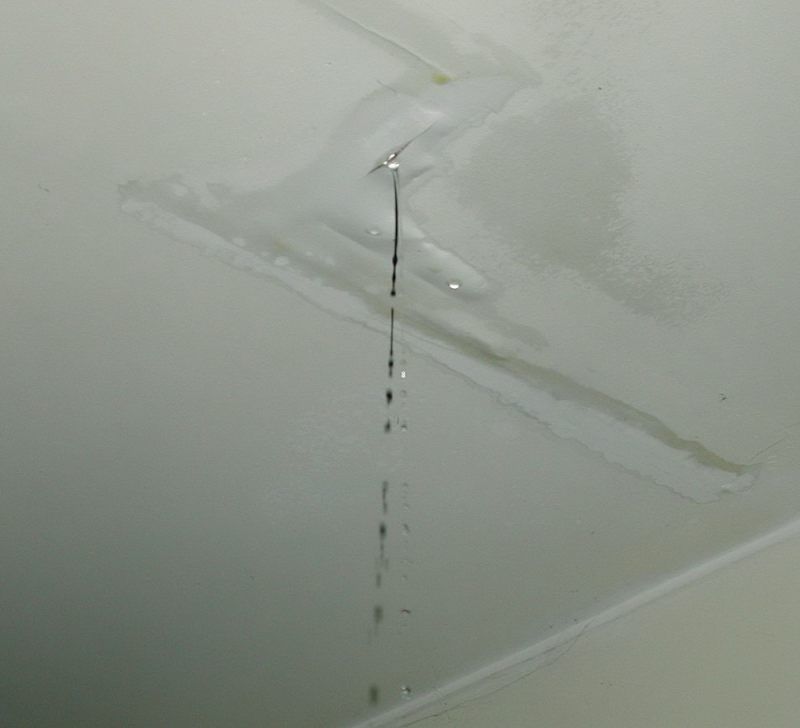
Leaks or moisture inside your home can be a warning sign that you need a new roof. A compromised roofing system can allow water to infiltrate your home, leading to problems such as damaged insulation, mold and mildew growth, rotting wood, and even structural damage.
Identifying and addressing leaks or moisture issues early on can help prevent further damage and the need for more extensive repairs. If your house has leaks or moisture issues, contact a roofing expert to assess the condition and offer a solution.
3. Curling or Buckling Shingles
Curling or buckling shingles are also a strong indication that your roof is nearing the end of its life and that you may need a new roof. Shingles curl or buckle when they lose their adhesive properties, causing them to lift away from the roof deck. This not only damages your roof’s appearance but also exposes the underlying materials to moisture and the elements.
There are two primary types of shingle curling:
- Cupping: This occurs when the edges of the shingles turn upward, creating a cup-like shape.
- Clawing: This happens when the middle of the shingle lifts while the edges remain flat.
If you observe curling or buckling shingles on your roof, it’s essential to consult with a professional roofing contractor to assess the situation. A complete roof replacement may be needed to safeguard your property from the elements, depending on the damage and age of your roof.
4. Missing or Damaged Shingles
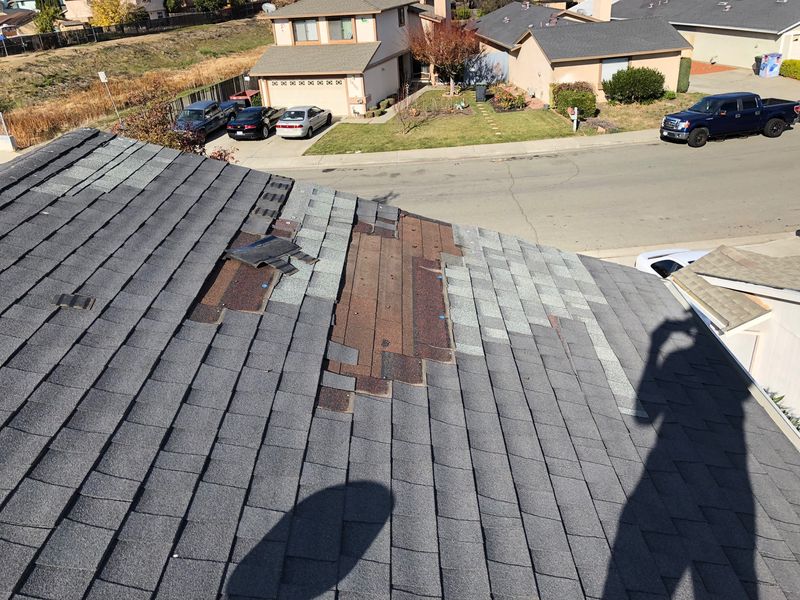
Missing or damaged shingles compromise your roof’s weatherproofing and may require repair. Shingles can be damaged by strong winds, hail, falling debris, and the natural aging process.
Missing or damaged shingles expose roofing materials to moisture and the elements, causing severe damage. If you notice missing or damaged shingles on your roof, it’s essential to address the issue promptly.
In some cases, individual shingles can be replaced, while widespread damage may warrant a complete roof replacement in others. A roofing expert can evaluate and fix deeper concerns like poor ventilation or roof structure issues if shingles are missing or damaged.
5. Granule Loss
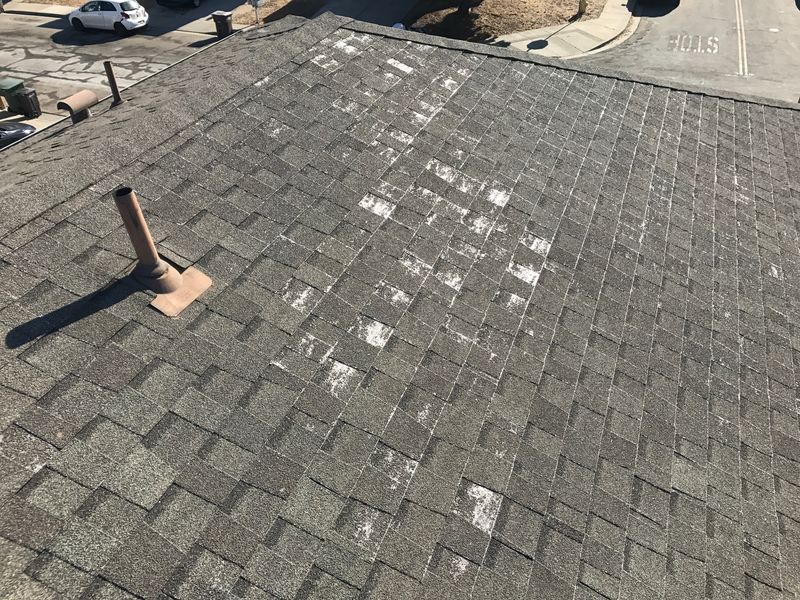
This can indicate that your roof may need replacement, particularly in the case of asphalt shingles. Asphalt shingles are coated with granules that serve several essential functions, such as protecting the shingles from the sun’s ultraviolet rays, enhancing their durability, and helping them shed water effectively.
These granules can become dislodged, gather in your gutters, or be washed away by rain, which may indicate that your roof is deteriorating. When shingles lose their granules, they become more vulnerable to the elements and are more likely to crack, become brittle, and deteriorate prematurely. This increases the likelihood of leaks and other roofing issues.
6. Mold and Mildew Growths
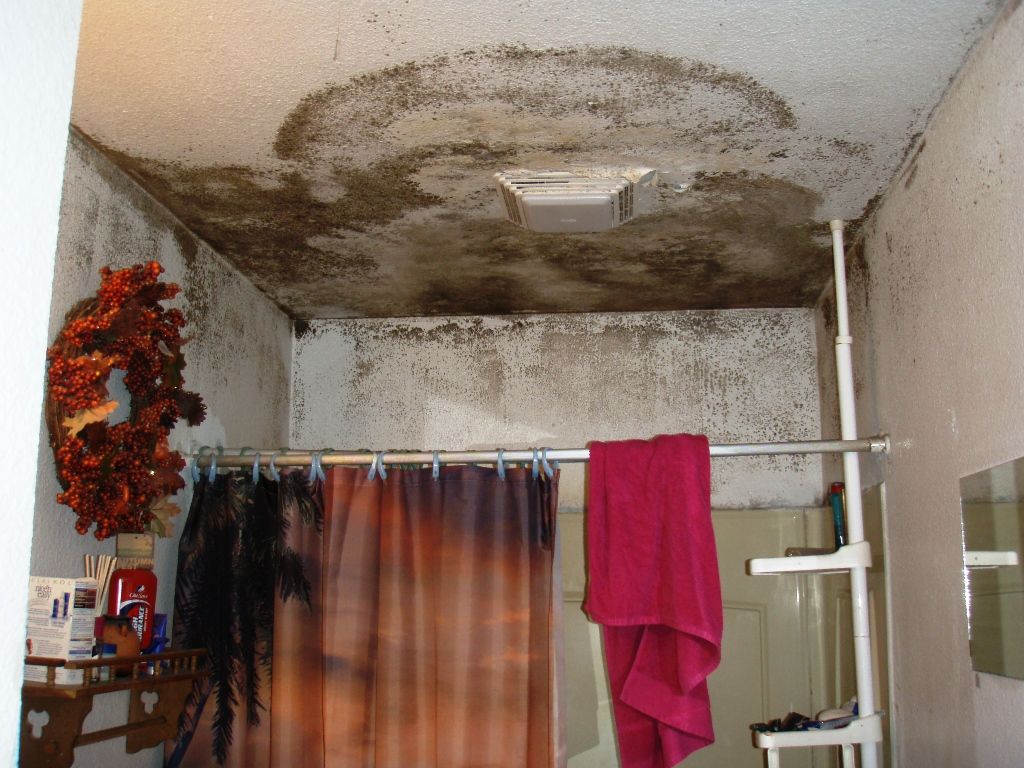
Mold and mildew growths can be another sign that your roof may need replacement. These growths can develop due to excessive moisture, poor ventilation in your attic, and leaks in your roofing system. Mold and mildew can damage your roof and endanger you and your family.
If you notice mold or mildew on your roof, it’s essential to address the issue promptly. A thorough cleaning and improved ventilation may resolve the problem. If the roof has considerable mold and mildew growth or damaged roof materials, it may need to be replaced.
7. Alage or Moss Growth
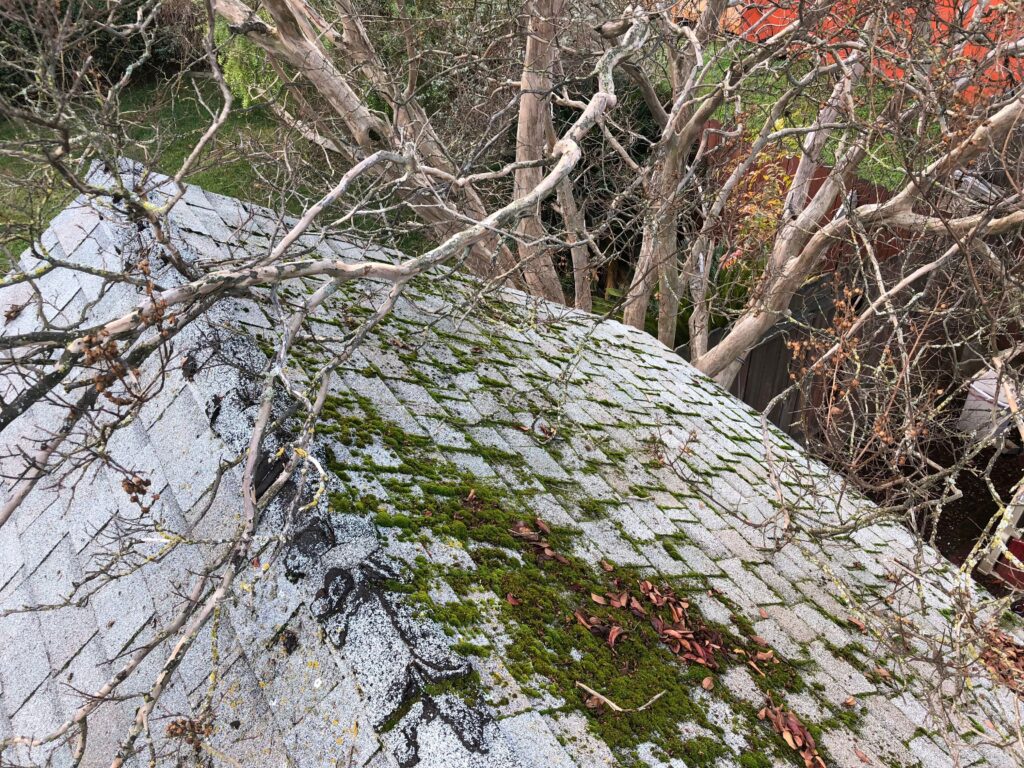
This problem can be more than just an aesthetic concern; as it can also indicate that you may need a new roof. These growths can harm shingles and the roof structure over time, limiting the lifespan of your roofing system.
Moss and algae thrive in damp, shaded environments, and their growth on your roof can lead to several issues. Moss retains moisture, which can cause the shingles to deteriorate and the underlying roof materials to rot. As the moss grows and spreads, it can lift the shingles, allowing water to seep underneath and cause leaks.
On the other hand, algae growth, particularly on asphalt shingles, can lead to the breakdown of the limestone filler in the shingles. This reduces the shingles’ ability to reflect sunlight, increasing roof heat absorption and energy expenses.
8. Increased Energy Bills
A sudden increase in your energy bills could be a sign that your roof is no longer effectively insulating your home. Damaged or missing insulation increases heat transfer, making your HVAC system work harder to maintain a comfortable temperature. Inspecting your roof and insulation may be time if you notice a spike in your energy bills without a clear explanation.
9. Aging
The lifespan of a roof depends on the material used, the quality of the installation, and the local weather conditions. Asphalt shingle roofs typically last 20 to 25 years, while metal roofs can last 40 to 70 years, and slate or tile roofs can last more than a century. If your roof is nearing the end of its expected lifespan, it’s wise to start considering a replacement to avoid unexpected issues.
There You Have It!
Your roof is critical in protecting your home from the elements and maintaining its structural integrity. By keeping an eye out for the warning signs discussed in this article, you can ensure that you address any roofing issues before they become significant problems. If you suspect that your roof may need replacement, it’s always best to consult with a professional roofing contractor to assess the situation and provide recommendations on the best course of action. Proactively protecting your house saves time, money, and stress.


